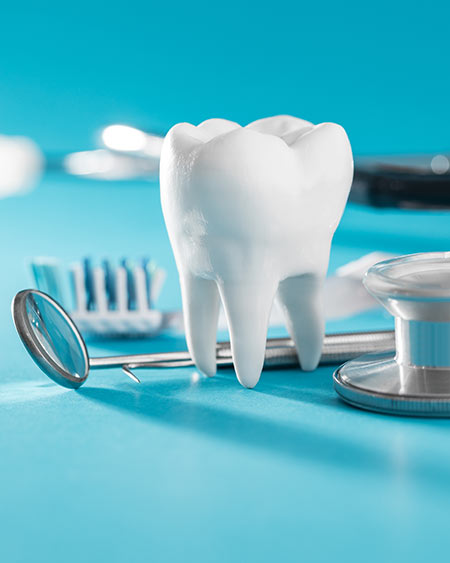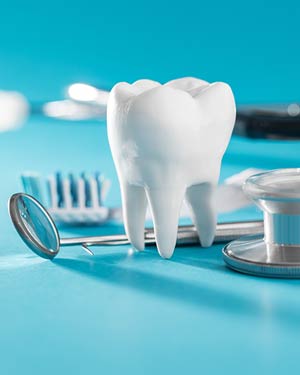Dental Fillings Specialist Serving Mesquite, Dallas TX
If you think that you may have a cavity, or require a dental filling, visit us at Love 2 Smile Dental Practice. Dr. Divya Nagaraj DDS and our professional team of experienced dental specialists will provide the care you need to get back to feeling your best. Connect with us today about our dental filling services or book in online to schedule an appointment – we’re happy to help! We are located at 1050 N Bryan-Belt Line Rd Ste 102, Mesquite, TX 75149.




Table of Contents:
What are dental fillings used for?
How long do tooth fillings usually last?
Why is it important to get a cavity removed?
What steps are involved in filling a tooth?
Fillings are specially made dental materials that are used to repair teeth that have been damaged by decay, cracked, or worn down due to grinding. They are most commonly used to restore teeth that have cavities, helping to strengthen and protect what is remaining of the natural tooth.
Dental fillings are primarily used to restore and stabilize a damaged tooth. While they are most commonly used to treat cavities, they can also be used to repair teeth that have cracked, eroded, or become broken.
The filling can be constructed using different mouth-safe composites such as gold, porcelain, silver amalgam, resin, and glass ionomer. Dr. Divya Nagaraj DDS will recommend a certain type of filling based on your unique dental case, the location of the affected tooth, the extent of the damage, as well as any medical considerations (such as allergies). If you have budget constraints, they will also take this into consideration as some types of fillings are considerably cheaper than others.
The average lifespan of a filling is between 10 and 15 years, depending on the type of filling you get, how well you take care of your teeth, and any coinciding dental and/or medical conditions at play.
The longevity of a filling will also be affected by any cracks or trauma to the affected tooth and surrounding teeth, if you grind your teeth, the levels of decay present around the filling, and your eating habits.
Dr. Divya Nagaraj DDS will provide you with a detailed set of instructions regarding how to take care of and maintain your filling. They will also help you safeguard your teeth through regular checkups and cleanings, helping to preserve the integrity of the affected tooth as well as the ones surrounding it.
While a cavity can start small, it can quickly turn into a big problem if you don’t treat it effectively.
If you fail to remove a cavity, the likelihood of the decay and/or damage worsening grows exponentially. It can start to affect the deeper layers of your tooth, which leads to pain, infection, abscesses, and even the loss of the tooth altogether.
When treated quickly and effectively, Dr. Divya Nagaraj DDS is often able to repair and save your natural tooth. Left untreated, the risk of developing larger and more complex dental issues becomes more probable.
Having a filling inserted is a very routine in-office procedure that can usually be accomplished over the course of 30-60 minutes. While dentistry often gets a bad wrap for having some uncomfortable procedures, cavity removal and getting a filling placed is usually a very pain-free process.
During your appointment, you can expect the procedure to move forward as follows:
1. Dr. Divya Nagaraj DDS will first apply a numbing gel to the gums so that you won’t feel any pain or discomfort during the procedure. Her goal is to keep you as comfortable as possible, and she will test the area to make sure it’s numb before moving forward in the process.
2. Using a small drill and another specialized dental tool, Dr. Divya Nagaraj DDS will proceed to remove the decay from your tooth and clear any debris from the area.
3. Dr. Divya Nagaraj DDS will then use a composite to fill the hole in your tooth. She will use special dental cement to keep the filling in place.
4. Once the filling has been set, she will polish it and check your bite to make sure everything is correct. If any adjustments need to be made, she will do so now.
5. Once complete, you are free to go!
At Love 2 Smile Dental, we offer cavity treatment and dental fillings so that you can safeguard your smile at every stage. Contact us today for more information about our dental services or book with us online at your earliest convenience. We are located at 1050 N Bryan-Belt Line Rd Ste 102, Mesquite, TX 75149. We serve patients from Mesquite Dallas TX, Sunnyvale TX, Forney TX, Balch Springs TX, Garland TX, Rowlett TX, and surrounding areas.


Additional Services You May Like
▸ Emergency Care
▸ Smile Makeover
▸ Invisalign
▸ General Dentistry
▸ Dentures
▸ Root Canal
▸ Dental Fillings
▸ Teeth Whitening
▸ Oral Cancer Screening
▸ Tooth Extraction
▸ Dental Crown
▸ Dental Bridges
▸ Dental Check-ups & Cleaning
▸ Pediatric Dentist
▸ Cosmetic Dentistry
▸ All-on-4 Dental Implants
▸ Dental Implants
▸ Single Tooth Implants



